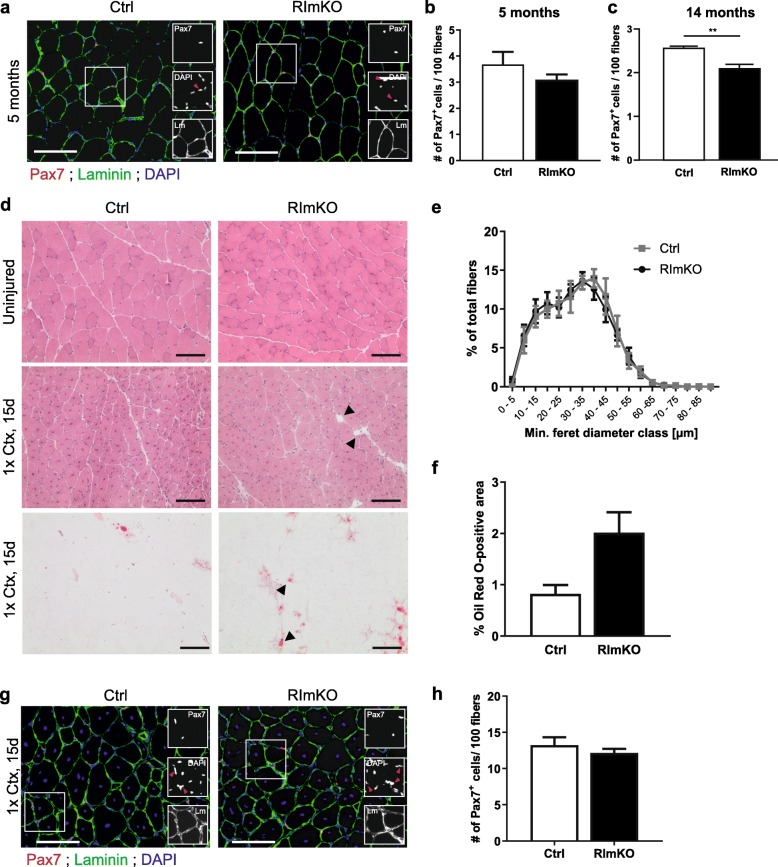Fig. 6.
mTORC2 signaling in myofibers affects the maintenance of MuSCs. a Merged and single (insets) staining against Pax7 (red), laminin (green), and for DAPI (blue) of muscle cross-sections from 5-month-old Ctrl and RImKO mice. Red arrowheads in insets indicate DAPI-positive nuclei that are also Pax7-positive. b Quantification of the number of Pax7-positive cells per 100 myofibers in TA muscle from 5-month-old Ctrl and RImKO mice (n = 4–6). c Quantification of the number of Pax7-positive cells from 14-month-old Ctrl and RImKO mice (n = 3–4). (d–h) Analysis of regenerating TA muscle of 14-month-old control and RImKO mice, 15 days after cardiotoxin (Ctx)-induced injury (1x Ctx, 15 days). d H&E (top) and Oil Red O (bottom) coloration of TA muscle cross-sections. Arrowheads point to adipocytes in regenerating RImKO muscle. Scale bar, 100 μm. e Fiber size distribution of TA muscle (n = 3-4). f Quantification of relative area positive for Oil Red O staining (n = 3–4). g Merged and single (insets) staining against Pax7 (red), laminin (green) and for DAPI (blue) of muscle cross-sections from 14-month-old Ctrl and RImKO mice, 15 days after Ctx injury. Red arrowheads in insets indicate DAPI-positive nuclei that are also Pax7-positive. h Quantification of the number of Pax7-positive satellite cells 15 days post Ctx injury (n = 3–4). Data represent mean ± SEM. **p < 0.01, Student’s t test (difference between genotypes)

